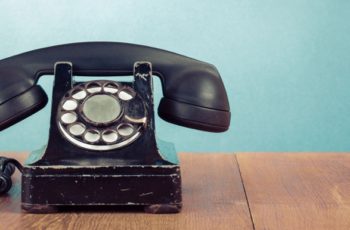Are Your Meetings As Efficient as Possible?
Whether your next meeting is an effective, productive one, or one your staff barely manages to “get through” is up to you. When evaluating your meeting effectiveness, consider if you regard them as part of a routinely practiced growth vehicle, or are just gathering everyone for the sake of routine? Sad to say, many reports conclude that meetings came in as the leading killer of office productivity, even beating out office politics. If you want to make your meetings the best they can be, set aside time to consider these items:
Is This Meeting Necessary?
Having a meeting for the sake of a having a meeting thinly veiled as an update serves no purpose, other than an opportunity for everyone to get up and moving, and away from their desks for an hour or so. Before you even block the meeting time, make sure you have a defined purpose and clear objectives. Does your staff need to be made aware of a change of management or a shift in strategy? Do you need their input in making a decision? Is there a problem facing the company? If you can’t identify a valuable reason, there’s no reason to hold a meeting.
Who Should Attend?
Often, in a misguided attempt to be inclusive, a manager or department head will summon all his staff to a meeting. However, if the discussions have nothing to do with their responsibilities, workers will consider the meeting a waste of time and spend the time doodling, or bemoaning what they could be accomplishing were they back at their desks. Therefore, before announcing a staff meeting, consider its main purpose and who needs to be there. Will you be announcing a change? If so, include only those who will be impacted by it. Are you seeking input to solve a problem? Summon only those likely to have the knowledge or skills to pose an answer. Don’t be afraid you may be hurting feelings by leaving everyone else out. They’re probably thanking their lucky stars they don’t have to be there!
Do you Need Help Keeping to a Schedule?
Work out an agenda of what you will cover in the meeting, along with a timeframe. Circulate it among attendees in advance of the meeting. Before the start of the meeting, post it on a screen or whiteboard. If necessary, appoint a helper to discretely signal if you linger on an item longer than scheduled. Checking each item off after it has been addressed helps keep people focused. Nor should your meeting last more than an hour. Ever wonder why workshops at conferences usually last 45 minutes? The human mind has trouble staying engaged for much longer than that.
Can You Walk a Fine Line?
Allowing one person to dominate a discussion is one of the best ways to loose control of a meeting, and you probably know who the most likely candidates are. If their input is contributing value, you may not want to stifle them, so intervening once they’ve made their point requires walking a fine line between being subtle and shushing. Thank the over-zealous speaker for his contribution, and if he doesn’t get the hint, remind him of time limits and the fact that others may want their chance to contribute. If there are no takers, move on to the next item on the agenda.
Did Everyone Hear What You Said? Did You Say What Everyone Heard?
Conversations around the coffee maker often reveal that several people can come away from the same meeting with different interpretations of a policy or change of procedure. Emailing all attendees a follow-up summary and the conclusions reached can reduce the risk of misunderstanding. Include all responsibilities delegated, tasks assigned, and agreed-upon deadlines. Do this within twenty-four hours of the meeting, and remind all that your door is open for questions.






